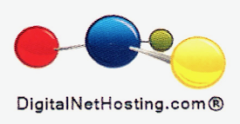Dynamics GP Working with Customer Statements
We recommend you to take a look in the lesson company on the month end receivable management checklist, where you should get the idea on the sequence. Recommended steps are: Aging, Reconcile to GL, Assess Finance Charges, Print Statements, Transfer Sales Commissions, and Remove Paid Transactions. Before you start Aging, we recommend you to print out Unapplied Documents report in RM, this is one of the options available for Sales Analysis report type. When you have this report, check if some of the legitimate payments might be forgotten to be applied to customer outstanding Invoices, Service/Repair, Debit Memos, or Finance Charges. When you are done with that, you should be ready for Aging. Let’s review these steps in some details:
1. Aging – this procedure classifies customer documents as being specific number of days old (if by document date is selected in RM Setup Aging Periods are selected by Document Date) or past due (if setting in RM by Due Date respectively). Aging is dedicated to customer statements, where you may decide to give your customers some time, before running aging – when you print historical aged trial balance report, it does aging automatically just for the purpose of the report, not affecting the Aging process described in this paragraph. Let now move on the next step in the Reconcile to GL
2. Reconcile to GL. This is very advanced tool, available in recent versions of GP: 2010, 10.0, 9.0 (we are not sure about version 8.0). As this tool is available with the same for selecting either Receivables or Payables – it is located in Financial Routines section. Please, include all the Account Receivable accounts on the right side (and if you are allowing term discounts, include those accounts as well) When you click on process button, it will create Excel worksheet for you, where you should see matched transactions (posted GL entry via audit trail and other information is linked to the RM transaction), potentially matched (typically where audit trail is not correct, when you potentially post transaction originated directly in GL to catch up the distribution from RM invoice, etc.) and unmatched transactions (where guessing doesn’t allow GP to classify something as potentially matching). You will see at the bottom beginning and ending balances in both modules: General Ledger and Receivable Management. Please, note, that Reconcile to GL is just a report, it doesn’t do anything – it is up to you to decide on the corrections
3. Finance Charges. If you sell on account to your customers, financial charges might be important mechanism to remind the customers about past due balance and the contract agreements. Financial Charges seem to be absolutely necessary, when you are using Scheduled Payments in RM (leasing, consumer credit sales with payment schedules). Grace period is often a good idea. For example, you may asses finance charges on the balances in 30 days past due or older. Well, now we are ready to print customer statements
4. Print Receivables Statements. In some cases statement is considered as invoice, in other scenarios it might be just an information document. You have several forms to select for the printable document: Long, Short, Side, User-definable, On Blank form, Short or Side Continuous, and two multicurrency forms. From this window (Sales Routines Statements) you can also access Messages setup form, where you can define messages relevant to the specific statement lines: NSF, Finance Charges, over 90 days old, etc. If you are on GP version 2010/11.0 – there is additional option for you to email statement automatically (there is MAPI email requirements at this time, March 2010). There are numerous parameter on the Statement printing form, such as Print For, Select Dates, your company address ID to be printed on the Statement, etc. You can reprint statements (when it was lost in mail or customer indicates, that they don’t have it – Reprint Statements checkbox should be marked in RM setup form)
5. How to modify Statement form? This could be done in Report Writer, use the same technic, as modifying more traditionally customizable reports, such as SOP Blank Invoice Form. You can place your company graphical logo on the statement, if required
6. Transfer Sales Commissions and other possible routines to consider at the end of the calendar month. Transfer Sales Commissions marks the commissions as Paid (allowing you to do such changes as delete Sales Person). Another possible routine is Write Off Documents, where you may decide to forgive your customers, who sent you check with few dollars short. Plus, consider printing and archiving Period-End Reports: Sales Summary, Sales Analysis, Tax Period Report
7. Paid Transactions Removal, this routine moves paid (completely applied) sales document from open (RM2XXXXX) to historical (RM3XXXXX) tables. Please, note that check clearing might take a week or more, it is impossible to apply NSF procedure to the payments, transferred to the history. This is why on the Paid Transactions Removal form you have separate cutoff date for Checks. Here, please be sure that you have track history check boxes marked, otherwise Paid Transaction Removal will simply delete documents
8. Close Fiscal Period for RM. This is optional, but very good idea to disable posting accounts receivable and Sales Order Processing documents for the closed fiscal period
9. Customer Statements in older versions of Great Plains, eEnterprise, GP select on Pervasive SQL 2000, Ctree or Btrieve. This publication still could be used as guidelines, however such new features as Reconcile to GL (with Excel report produced), Emailing the statements and some others might not be available for your version. If you are using Great Plains Accounting for DOS, Windows and Mac (9.5, 9.2 and earlier) – customer statement preparation procedure is different there
Source by Andrew Karasev

